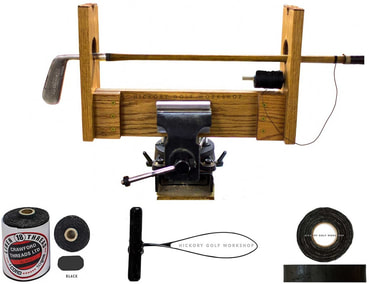koogz
Member
Could this be used to straighten the butt of a cue that's warped?
I've seen it used on wooden golf club shafts for what it's designed for.
I was wondering if applying a steady flow of constant heat plus this device would do the trick?
"Patrick Kennedy "Magic" Hickory Club Straightening Tool"

 www.hickorygolfworkshop.com
www.hickorygolfworkshop.com

I've seen it used on wooden golf club shafts for what it's designed for.
I was wondering if applying a steady flow of constant heat plus this device would do the trick?
"Patrick Kennedy "Magic" Hickory Club Straightening Tool"

Hickory Golf Club Tools
Tools we make and sell for repair and maintenance of hickory golf clubs